Showing Spotlights 1009 - 1016 of 2790 in category All (newest first):
 A typical preliminary test for tuberculosis includes culturing the samples for at least 1-2 weeks in a lab, followed by examination under a fluorescence microscope. The lack of rapid, accurate, and inexpensive point-of-care tools for detecting low amounts of M. Tuberculosis is a critical bottleneck in early diagnosis and appropriate treatment. Researchers have now developed a rapid and flexible nano-biosensor for diagnosing TB in early stages using smart phones.
A typical preliminary test for tuberculosis includes culturing the samples for at least 1-2 weeks in a lab, followed by examination under a fluorescence microscope. The lack of rapid, accurate, and inexpensive point-of-care tools for detecting low amounts of M. Tuberculosis is a critical bottleneck in early diagnosis and appropriate treatment. Researchers have now developed a rapid and flexible nano-biosensor for diagnosing TB in early stages using smart phones.
Sep 11th, 2015
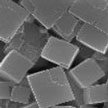 The ability to separate and purify specific molecules in a chemical mixture is essential to chemical manufacturing. By using membranes - rather than energy-intensive processes such as distillation and crystallization - the energy efficiency of these processes could be greatly increased. Crystalline materials known as zeolites are considered as an excellent membrane material due to their molecular-sized pores and high thermal, mechanical and chemical stabilities. In a new study, researchers prepared slice-shaped zeolite seeds by using various gel recipes and crystallization temperatures.
The ability to separate and purify specific molecules in a chemical mixture is essential to chemical manufacturing. By using membranes - rather than energy-intensive processes such as distillation and crystallization - the energy efficiency of these processes could be greatly increased. Crystalline materials known as zeolites are considered as an excellent membrane material due to their molecular-sized pores and high thermal, mechanical and chemical stabilities. In a new study, researchers prepared slice-shaped zeolite seeds by using various gel recipes and crystallization temperatures.
Aug 31st, 2015
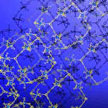 Previously reported conductive self-healing materials usually need large amounts of inorganic conducting fillers and their self-healing behaviors are only activated under specific external stimuli, such as heat, light, pH, etc. A new hybrid gel is composed of conductive polymer and a metal-ligand supramolecule; the novel gel exhibits attractive properties associated with both conventional polymers, such as ease of synthesis and processing, and great self-healing performance at room temperature without any stimuli.
Previously reported conductive self-healing materials usually need large amounts of inorganic conducting fillers and their self-healing behaviors are only activated under specific external stimuli, such as heat, light, pH, etc. A new hybrid gel is composed of conductive polymer and a metal-ligand supramolecule; the novel gel exhibits attractive properties associated with both conventional polymers, such as ease of synthesis and processing, and great self-healing performance at room temperature without any stimuli.
Aug 25th, 2015
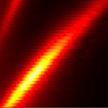 For the past decade, researchers have searched for robust, inorganic color filters that can replace traditional organic dye-based filters for better stability, lifetimes, performance, and amenability to miniaturization. I new work, researchers fabricated an inorganic filter that can operate with a single element. This represents an important step toward nanoscale color filters. The team devised a a simple design in which light can be filtered and tuned over wavelength through the use of a single nanoscale element in the form of a ZnO nanorod integrated with a silver cavity.
For the past decade, researchers have searched for robust, inorganic color filters that can replace traditional organic dye-based filters for better stability, lifetimes, performance, and amenability to miniaturization. I new work, researchers fabricated an inorganic filter that can operate with a single element. This represents an important step toward nanoscale color filters. The team devised a a simple design in which light can be filtered and tuned over wavelength through the use of a single nanoscale element in the form of a ZnO nanorod integrated with a silver cavity.
Aug 13th, 2015
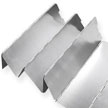 Glass is notorious for its brittleness. Although industry has developed ultra-thin, flexible glass that can be bent for applications liked curved TV and smartphone displays, fully foldable glass had not been demonstrated. Until now. In new work, researchers have demonstrated substrate platforms of glass and plastics, which can be reversibly and repeatedly foldable at pre designed location(s) without any mechanical failure or deterioration in device performances.
Glass is notorious for its brittleness. Although industry has developed ultra-thin, flexible glass that can be bent for applications liked curved TV and smartphone displays, fully foldable glass had not been demonstrated. Until now. In new work, researchers have demonstrated substrate platforms of glass and plastics, which can be reversibly and repeatedly foldable at pre designed location(s) without any mechanical failure or deterioration in device performances.
Aug 11th, 2015
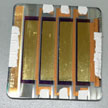 The development of perovskite solar cells, first reported in 2009 (and with a record power conversion efficiency of 20.1 percent so far), is a possible route towards high efficiency photovoltaics that are also cost-effectiveness, owing to to their easy-processing from solution. Question marks have however remained on their stability. Now, researchers report the world's first nanorod-based perovskite solar module. In addition to high efficiency, these perovskite solar modules also show remarkable and improved shelf life.
The development of perovskite solar cells, first reported in 2009 (and with a record power conversion efficiency of 20.1 percent so far), is a possible route towards high efficiency photovoltaics that are also cost-effectiveness, owing to to their easy-processing from solution. Question marks have however remained on their stability. Now, researchers report the world's first nanorod-based perovskite solar module. In addition to high efficiency, these perovskite solar modules also show remarkable and improved shelf life.
Aug 7th, 2015
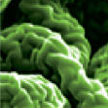 Wrinkling and buckling can occur at all length scales in materials composed of a stiff thin film on a strained supporting layer. When the strain is removed, either by thermal or mechanical stimuli, different surface patterns can form. This phenomenon - now starting to be realized at nanometer length scales - is emerging as a powerful bottom-up nanopatterning method to program surfaces with unique properties. It has many applications in the design and fabrication of flexible electronics and devices, micro-cell arrays, optical gratings, and so on.
Wrinkling and buckling can occur at all length scales in materials composed of a stiff thin film on a strained supporting layer. When the strain is removed, either by thermal or mechanical stimuli, different surface patterns can form. This phenomenon - now starting to be realized at nanometer length scales - is emerging as a powerful bottom-up nanopatterning method to program surfaces with unique properties. It has many applications in the design and fabrication of flexible electronics and devices, micro-cell arrays, optical gratings, and so on.
Aug 4th, 2015
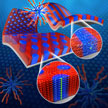 Researchers introduced a novel self-neutralization concept by designing molecular architecture of a block copolymer to develop vertically oriented lamellar or cylindrical nanodomains without pre- or post-treatments. Previously, in order to induce vertical orientation of block copolymer nanodomains in the film state, diverse pre- or post-treatments to neutralize the preferential affinity between a substrate and each block of the block copolymer need to be introduced
Researchers introduced a novel self-neutralization concept by designing molecular architecture of a block copolymer to develop vertically oriented lamellar or cylindrical nanodomains without pre- or post-treatments. Previously, in order to induce vertical orientation of block copolymer nanodomains in the film state, diverse pre- or post-treatments to neutralize the preferential affinity between a substrate and each block of the block copolymer need to be introduced
Aug 3rd, 2015
 A typical preliminary test for tuberculosis includes culturing the samples for at least 1-2 weeks in a lab, followed by examination under a fluorescence microscope. The lack of rapid, accurate, and inexpensive point-of-care tools for detecting low amounts of M. Tuberculosis is a critical bottleneck in early diagnosis and appropriate treatment. Researchers have now developed a rapid and flexible nano-biosensor for diagnosing TB in early stages using smart phones.
A typical preliminary test for tuberculosis includes culturing the samples for at least 1-2 weeks in a lab, followed by examination under a fluorescence microscope. The lack of rapid, accurate, and inexpensive point-of-care tools for detecting low amounts of M. Tuberculosis is a critical bottleneck in early diagnosis and appropriate treatment. Researchers have now developed a rapid and flexible nano-biosensor for diagnosing TB in early stages using smart phones.
 Subscribe to our Nanotechnology Spotlight feed
Subscribe to our Nanotechnology Spotlight feed





